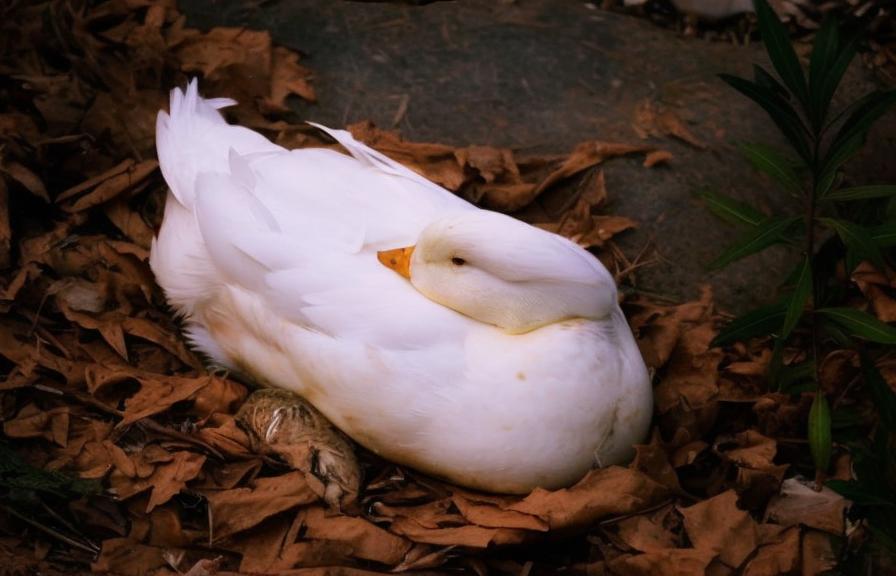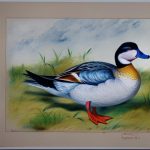Small duck breeds are a popular choice for backyard poultry enthusiasts and small-scale farmers. These pint-sized ducks are not only adorable, but they also have a number of practical benefits. Small duck breeds are easier to handle and require less space than their larger counterparts, making them a great option for those with limited space. Additionally, small duck breeds are known for their friendly and docile nature, making them a great choice for families with children. In this article, we will explore the characteristics and traits of small duck breeds, popular breeds to consider, housing and care requirements, breeding and reproduction considerations, as well as common health issues to be aware of when considering small duck breed ownership.
Key Takeaways
- Small duck breeds are popular for their manageable size and friendly disposition, making them a great choice for backyard poultry enthusiasts.
- Small duck breeds typically have a calm and docile nature, making them suitable for families with children and first-time duck owners.
- Popular small duck breeds include the Call Duck, East Indies Duck, and the Dutch Hookbill, each with their own unique characteristics and traits.
- When housing and caring for small duck breeds, it’s important to provide a secure and spacious enclosure with access to water for swimming and foraging.
- Breeding and reproduction of small duck breeds require careful consideration of mating pairs, nesting boxes, and proper incubation methods to ensure healthy offspring.
Characteristics and Traits of Small Duck Breeds
Small duck breeds are known for their compact size, making them a popular choice for those with limited space. They typically weigh between 2-4 pounds and have a compact, rounded body shape. Small duck breeds come in a variety of colors and patterns, adding to their visual appeal. In terms of temperament, small duck breeds are known for being friendly and sociable. They are often described as being curious and active, enjoying foraging and exploring their surroundings. Small duck breeds are also known for their hardiness and adaptability, making them well-suited for a variety of climates and living conditions. Additionally, small duck breeds are prolific layers, with some breeds laying up to 200 eggs per year. This makes them a great choice for those interested in egg production. Overall, small duck breeds are a great option for those looking for a low-maintenance, friendly, and productive addition to their flock.
Popular Small Duck Breeds
There are several popular small duck breeds that are well-suited for backyard poultry enthusiasts and small-scale farmers. One popular small duck breed is the Call Duck. Call Ducks are known for their petite size, weighing in at around 2-2.5 pounds. They come in a variety of colors, including white, gray, and blue, and are known for their distinctive “quack.” Call Ducks are friendly and sociable, making them a great choice for families with children. Another popular small duck breed is the East Indies Duck. This breed is known for its striking iridescent green plumage and compact size, weighing around 2-3 pounds. East Indies Ducks are known for their calm and docile nature, making them a great addition to any flock. Other popular small duck breeds include the Dutch Hookbill, Silver Bantam, and Miniature Crested Duck. Each of these breeds has its own unique characteristics and traits, making them well-suited for a variety of different preferences and needs.
Housing and Care for Small Duck Breeds
When it comes to housing and care for small duck breeds, there are a few key considerations to keep in mind. First and foremost, it’s important to provide adequate shelter and protection from predators. This can be achieved through the use of a secure coop or shelter that is raised off the ground to prevent flooding and provide a safe space for the ducks to roost at night. Additionally, small duck breeds require access to clean water for swimming and drinking, as well as a balanced diet that includes a mix of commercial feed and fresh greens. It’s also important to provide ample space for the ducks to roam and forage, as well as regular access to sunlight and fresh air. Overall, providing a safe and comfortable living environment is essential for the health and well-being of small duck breeds.
In terms of care, small duck breeds require regular grooming to maintain their plumage and keep them clean and healthy. This includes regular bathing or access to a shallow pool of water for swimming, as well as regular inspections for parasites or signs of illness. Additionally, it’s important to provide regular veterinary care, including vaccinations and deworming, to ensure the long-term health of the ducks. Overall, providing attentive care and a safe living environment is essential for the well-being of small duck breeds.
Breeding and Reproduction of Small Duck Breeds
Breeding and reproduction considerations are an important aspect of small duck breed ownership. Small duck breeds typically reach sexual maturity at around 5-6 months of age, at which point they may begin laying eggs. It’s important to provide suitable nesting boxes or areas for the ducks to lay their eggs, as well as access to a drake for fertilization if breeding is desired. Small duck breeds are known for their broody nature, meaning they may exhibit a strong desire to sit on their eggs and hatch them. If breeding is desired, it’s important to provide a suitable environment for brooding and raising ducklings, including access to warmth, protection from predators, and appropriate nutrition.
It’s also important to consider the potential challenges of breeding small duck breeds, including the risk of inbreeding and genetic issues. Careful selection of breeding pairs and regular monitoring of offspring is essential for maintaining the health and genetic diversity of small duck breeds. Additionally, it’s important to have a plan in place for managing surplus ducklings if breeding is not desired or if there is limited space available. Overall, breeding and reproduction considerations require careful planning and attention to ensure the health and well-being of small duck breeds.
Health and Common Issues in Small Duck Breeds

Like all animals, small duck breeds are susceptible to a variety of health issues that require careful monitoring and management. Common health issues in small duck breeds include respiratory infections, parasites such as mites or worms, bumblefoot (a bacterial infection of the feet), and nutritional deficiencies. It’s important to provide regular veterinary care and monitoring to ensure the early detection and treatment of any health issues that may arise. Additionally, providing a clean living environment, access to fresh water, balanced nutrition, and regular grooming can help prevent many common health issues in small duck breeds.
It’s also important to be aware of potential environmental hazards that may impact the health of small duck breeds, such as exposure to toxins or pollutants in their living environment. Providing a safe and clean living environment is essential for preventing environmental-related health issues. Overall, proactive monitoring, attentive care, and regular veterinary check-ups are essential for maintaining the health and well-being of small duck breeds.
Conclusion and Considerations for Small Duck Breed Ownership
In conclusion, small duck breeds are a popular choice for backyard poultry enthusiasts and small-scale farmers due to their compact size, friendly nature, and prolific egg production. When considering small duck breed ownership, it’s important to carefully consider housing and care requirements, breeding and reproduction considerations, as well as common health issues that may arise. Providing a safe and comfortable living environment, attentive care, regular veterinary check-ups, and proactive monitoring are essential for maintaining the health and well-being of small duck breeds. With careful planning and attention to their unique needs, small duck breeds can make a delightful addition to any flock or farm.
If you’re interested in small duck breeds, you might also want to check out Poultry Wizard’s article on “The Chicken Coop Country Diner.” This article discusses the benefits of having a well-designed and functional chicken coop, which can also be applicable to housing small duck breeds. You can read more about it here.
FAQs
What are some small duck breeds?
Some small duck breeds include the Call Duck, East Indies Duck, and the Mandarin Duck.
What are the characteristics of small duck breeds?
Small duck breeds are typically compact in size, have short bills, and are known for their vibrant and colorful plumage.
What are the advantages of raising small duck breeds?
Small duck breeds are often easier to manage and require less space compared to larger duck breeds. They also tend to be more docile and can be kept in smaller backyard settings.
What are the common uses of small duck breeds?
Small duck breeds are often kept for ornamental purposes, as pets, or for exhibition in shows. They may also be raised for their eggs or as part of a small-scale farming operation.
What are some considerations for raising small duck breeds?
When raising small duck breeds, it’s important to provide them with a suitable living environment, access to water for swimming, and a balanced diet. Additionally, proper predator protection and healthcare should be taken into consideration.
Meet Walter, the feathered-friend fanatic of Florida! Nestled in the sunshine state, Walter struts through life with his feathered companions, clucking his way to happiness. With a coop that’s fancier than a five-star hotel, he’s the Don Juan of the chicken world. When he’s not teaching his hens to do the cha-cha, you’ll find him in a heated debate with his prized rooster, Sir Clucks-a-Lot. Walter’s poultry passion is no yolk; he’s the sunny-side-up guy you never knew you needed in your flock of friends!







